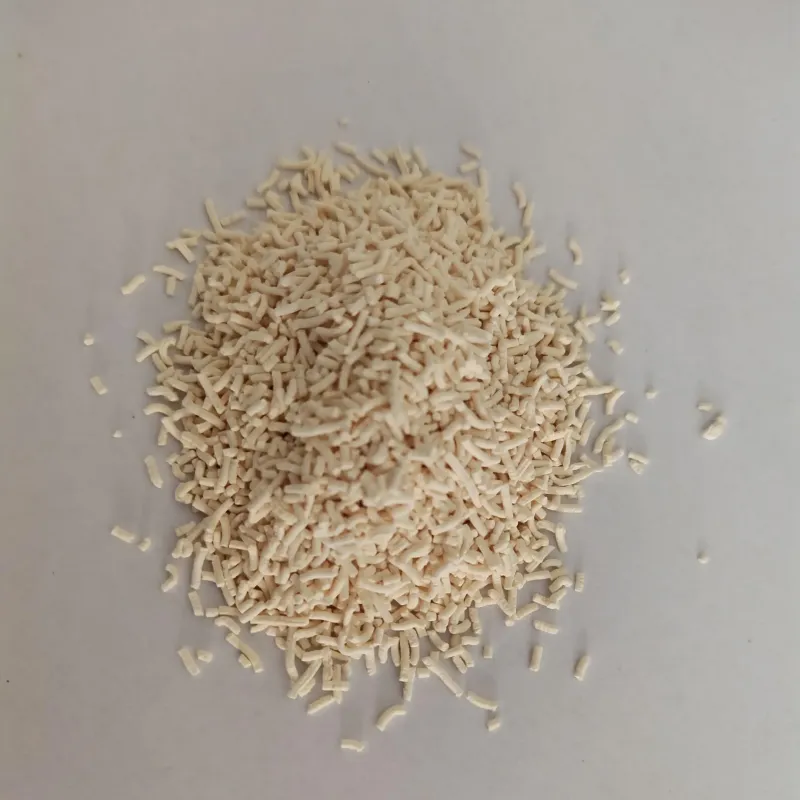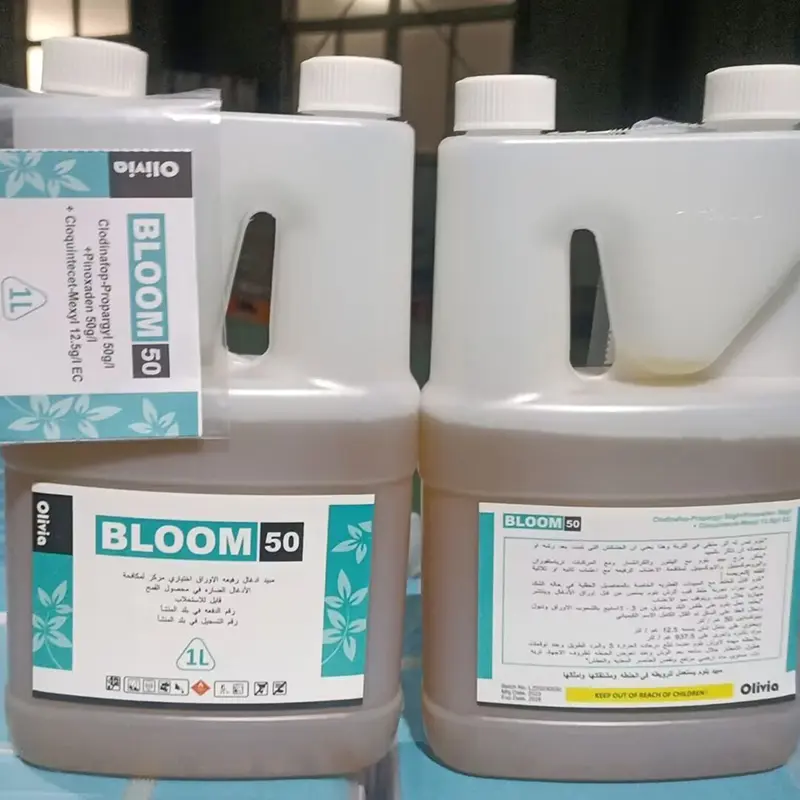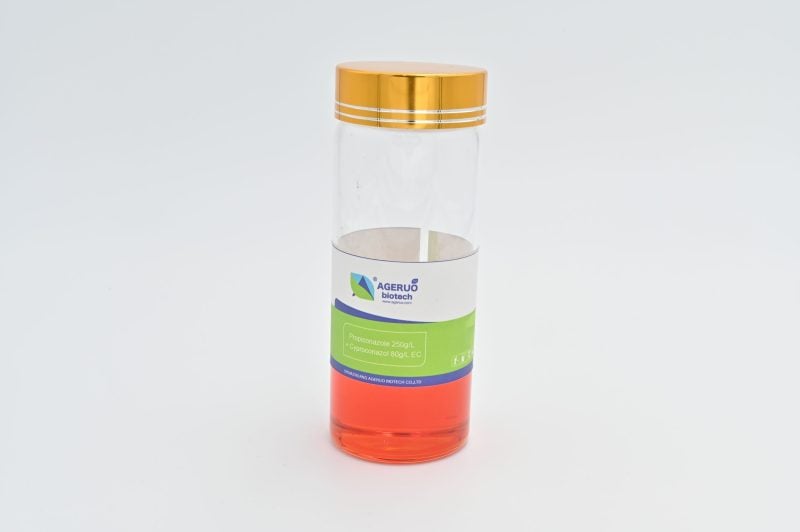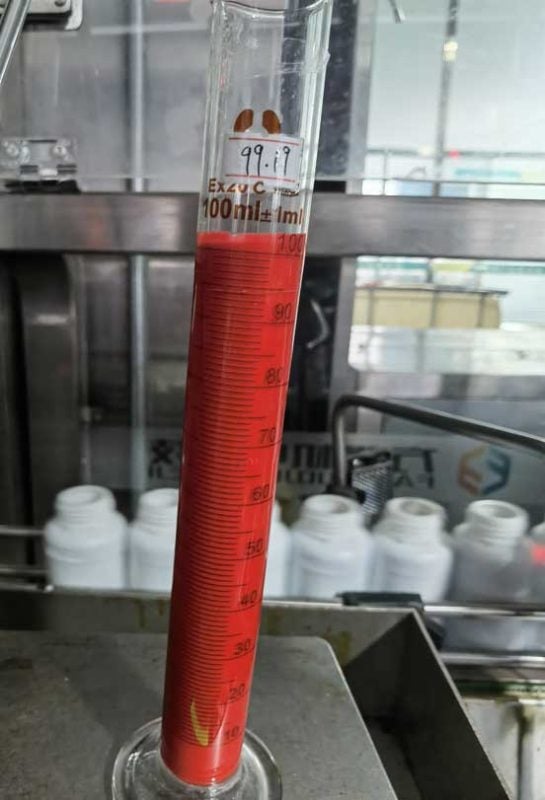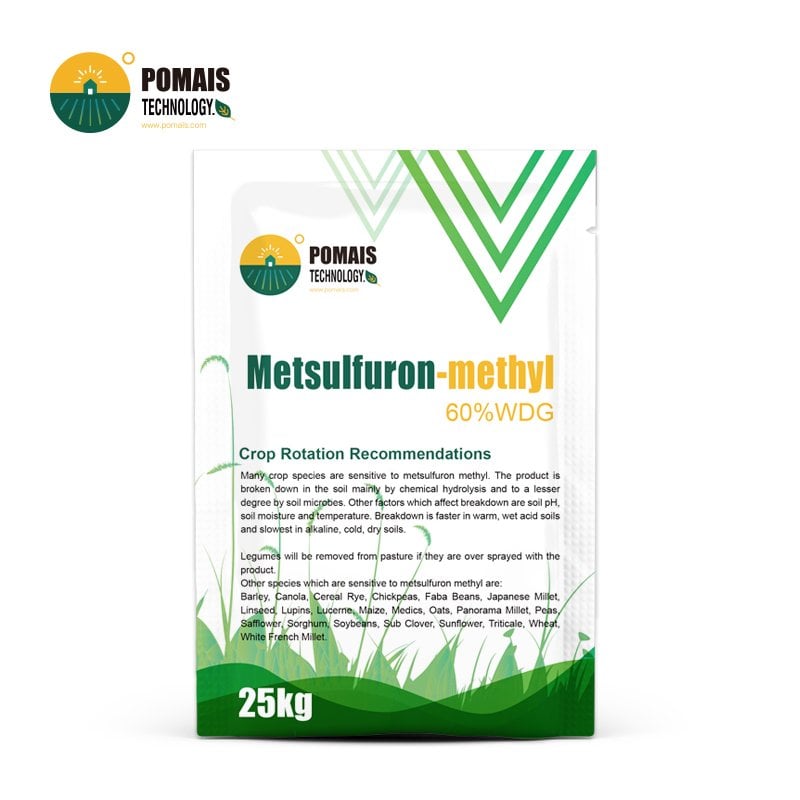Nitenpyram 20% + Pymetrozine 60% WDG Insecticide
If you’re targeting stubborn sap-sucking insects like whiteflies, aphids, and planthoppers, POMAIS Nitenpyram 20% + Pymetrozine 60% WDG is your go-to solution. Designed for high-pressure pest environments, particularly in hot and humid climates, this product combines two complementary active ingredients that deliver immediate knockdown and prolonged feeding suppression. Its WDG (water-dispersible granule) formulation ensures safe handling, easy application, and exceptional field performance, offering farmers an efficient, cost-effective approach to managing insect outbreaks during critical crop growth stages.
POMAIS Nitenpyram 20% + Pymetrozine 60% WDG offers a powerful dual-action solution for managing challenging sap-sucking pests such as whiteflies, aphids, and planthoppers. This advanced formulation leverages the rapid knockdown effect of Nitenpyram with the feeding-inhibition action of Pymetrozine, providing both immediate and sustained protection. Its water-dispersible granule form ensures ease of application, high stability, and outstanding crop compatibility, making it a preferred choice in hot, humid regions where pest pressure is high.
- Designed for Professional Buyers & Bulk Orders
- This product is available for business purchase and large-scale distribution.
- We support custom packaging, labeling, and formulation to meet your market needs.
- Let’s build your brand together.

About Nitenpyram 20% + Pymetrozine 60% WDG Insecticide
About Nitenpyram 20% + Pymetrozine 60% WDG Insecticide
| Product Name | Nitenpyram 20% + Pymetrozine 60% WDG |
| Formulation Type | WDG (Water-Dispersible Granule) |
| Active Ingredients | Nitenpyram 20%, Pymetrozine 60% |
| CAS Numbers | Nitenpyram: 120738-89-8, Pymetrozine: 123312-89-0 |
| Mode of Action | Nitenpyram: Systemic neonicotinoid disrupting nicotinic acetylcholine receptors Pymetrozine: Selective feeding inhibitor acting on salivary pump |
| Target Pests | Whiteflies, Aphids, Planthoppers, Leafhoppers |
| Target Crops | Rice, Vegetables, Citrus, Cotton, Ornamentals |
| Application Rate | 5–10 g/acre depending on crop and pest level |
| Key Benefits |
|
| Formulation Advantages |
|
| Packaging Options | 100g, 250g, 500g, 1kg or customized |
| Shelf Life | 2 years under proper storage |
| Storage Conditions | Store in cool, dry, ventilated area; away from food and heat |
| POMAIS Services |
|
WDG Formulation
WDG formulation ensures superior handling, dispersibility, and application precision.
WDG (Water-Dispersible Granules) are solid, free-flowing granules that disperse or dissolve in water to form a suspension. Key formulation advantages:
- Dust-free and safe to handle
- Excellent suspension and dispersion in water
- Uniform spray distribution with no clogging
- Compatible with most spraying equipment
- Stable under storage and environmental conditions
- Reduced chemical waste and application residue
Water-Dispersible Granules (WDG) are among the most advanced pesticide formulations for field use. Unlike wettable powders, WDGs are dust-free, reducing inhalation risk and product loss during mixing. Once mixed with water, the granules disperse completely into a stable suspension that flows easily through sprayers without clogging. WDGs offer uniform distribution on crop foliage and soil, making them ideal for systemic and contact insecticides. The stability of WDG ensures reduced degradation during storage and use, while minimizing residue concerns and maximizing coverage efficiency. For large-scale agriculture and precision pest management, this formulation guarantees performance without compromising safety.
Active Ingredient
Nitenpyram – Rapid Insecticidal Action
Nitenpyram offers fast, powerful pest knockdown through neural disruption.
Nitenpyram is a synthetic neonicotinoid insecticide with strong systemic properties. Once applied, it is rapidly absorbed by plant tissues and translocated throughout the crop, ensuring protection of both treated and emerging foliage. It targets insect nicotinic acetylcholine receptors, disrupting nerve signal transmission, causing hyperexcitation, paralysis, and death. Its efficacy is most notable against nymph and adult stages of leafhoppers, aphids, and whiteflies. Within a few hours of application, treated insects cease feeding and begin to die, significantly reducing crop damage and viral disease transmission.
- Belongs to the neonicotinoid class
- Provides contact and stomach poison effects
- Systemically translocated throughout plant tissues
- Effective against aphids, leafhoppers, and whiteflies
- Rapid action—kills insects within hours of ingestion
Pymetrozine – Long-Lasting Feeding Inhibition
Pymetrozine disrupts pest feeding, leading to starvation and pest population collapse.
Pymetrozine acts through a novel biochemical pathway by interfering with the salivary pump mechanism in sap-sucking insects, effectively stopping their ability to ingest plant fluids. This unique mode of action means pests stop feeding shortly after exposure, even if mortality is delayed. Pymetrozine is highly selective for Hemiptera, including aphids, planthoppers, and whiteflies, while sparing beneficial predatory insects and pollinators. With a long residual effect on treated foliage, it prevents re-infestation and suppresses pest population resurgence, supporting sustainable integrated pest management (IPM) programs.
- Belongs to the pyridine azomethine class
- Targets Hemiptera such as aphids, whiteflies, planthoppers
- Causes immediate cessation of feeding after contact or ingestion
- Safe to beneficial insects and predatory organisms
- High residual efficacy with low resistance risk
Mode of Action: Complementary Insect Control
Two modes of action ensure both quick mortality and extended protection.
This formulation combines the fast-acting neurotoxic effect of Nitenpyram with the unique anti-feeding mechanism of Pymetrozine to deliver a comprehensive approach to pest control. The dual-action strategy not only expands the spectrum of control but also provides an effective resistance management tool. While Nitenpyram provides a rapid kill of existing pest populations, Pymetrozine ensures that any surviving insects cannot feed or reproduce, leading to a collapse in future generations. This synergy is especially useful in areas with high resistance pressure.
- Nitenpyram: Binds to nicotinic acetylcholine receptors in insect neurons, causing overstimulation, paralysis, and rapid death.
- Pymetrozine: Inhibits feeding behavior by blocking the salivary mechanisms essential for sap ingestion, leading to starvation.
This combination delivers a one-two punch—first knocking down existing populations, then inhibiting survivors from feeding and reproducing. This dual mechanism is effective against multiple insect stages and significantly delays the onset of resistance, extending the product’s useful life in rotation schemes.
Key Advantages & Selling Points
- Effective on Multiple Life Stages: Controls nymphs and adult pests
- Fast Knockdown: Immediate action from Nitenpyram minimizes crop damage
- Long Residual Activity: Pymetrozine protects for extended periods after application
- Resistance Management: Dual chemistry delays pest resistance development
- Crop Compatibility: Safe for use on rice, vegetables, citrus, cotton, and ornamentals
- Cost-Effective: Reduces need for multiple applications and different pesticide types
- Environmental Compatibility: Low toxicity to mammals, birds, and non-target beneficials
Application Recommendations
Use tailored doses for specific crops and pest infestation stages.
When using POMAIS Nitenpyram + Pymetrozine 80% WDG, it’s essential to adapt the dosage based on crop type, pest intensity, and environmental conditions. For rice crops, apply 5–10 grams per acre during the peak of planthopper nymph activity. This timing is critical as younger nymphs are more susceptible to systemic action. In horticultural crops like lilies or tomatoes, apply 6–10 grams per acre at the first sign of aphid activity. Uniform coverage is vital, so use high-volume sprayers and ensure thorough wetting of foliage and stems. Avoid spraying during rain or high temperatures, which can reduce efficacy or cause phytotoxicity.
| Crop | Target Pest | Dosage | Application Timing | Max Applications |
|---|---|---|---|---|
| Rice | Rice planthopper | 5–10 g/acre | At peak of nymph population | 2 per season |
| Lily | Aphids | 6–10 g/acre | At early signs of infestation | 1 per season |
- Apply with high-volume sprayers for optimal coverage
- Use sufficient water to ensure even distribution on leaves and stems
- Avoid spraying during extreme heat or rain
Applicable Markets & Regional Use Cases
Versatile across tropical and subtropical agricultural systems.
Middle East
- Crops: Tomatoes, cucumbers, citrus, peppers
- Pests: Whiteflies, aphids
- Conditions: Hot and dry, pest outbreaks are severe
In dry, arid conditions where whiteflies and aphids persist due to low rainfall and intensive irrigation, this product provides a fast and lasting solution in crops like tomatoes and cucumbers.
Southeast Asia
- Crops: Rice, chili, eggplant, bananas
- Pests: Aphids, whiteflies, planthoppers
- Conditions: Hot and humid, high pest reproductive cycles
In high-humidity, pest-favorable climates, the dual-action controls multiple Hemipteran generations in rice, eggplants, and bananas.
Latin America
- Crops: Corn, cotton, vegetables, citrus
- Pests: Aphids, whiteflies
- Benefits: Improves yield and reduces pest losses
In areas cultivating corn, cotton, and citrus, where aphid-transmitted viruses are a concern, early intervention with this formulation can reduce disease incidence.
Africa
- Crops: Maize, pulses, horticulture
- Pests: Leafhoppers, aphids
- Market Trend: Demand for eco-friendly, low-residue products increasing
For maize and horticultural crops, it offers an eco-conscious option in regions seeking residue-reduced solutions for export crops.
Precautions & Safety Measures
Strict adherence ensures user safety and environmental protection.
Operators should always wear long-sleeved protective clothing, rubber gloves, goggles, and a respirator when handling or spraying this product. As Nitenpyram is moderately toxic to aquatic organisms and Pymetrozine can impact non-target insects under overuse, it’s essential to avoid drift or runoff into natural water bodies. Do not spray during flowering to protect pollinators, and keep away from beekeeping zones. Empty packaging must be triple-rinsed and punctured before disposal. Never reuse containers. Products should be kept out of reach of children and stored in their original, clearly labeled packaging.
- Wear protective gear (long-sleeves, gloves, goggles, respirator) during mixing and application
- Avoid use in pollinator zones and during flowering periods
- Do not apply in silkworm rearing areas or near aquaculture
- Avoid water source contamination; do not clean equipment in rivers or ponds
- Store in original packaging; keep sealed and labeled
- Keep away from children and unauthorized persons
- Pregnant and breastfeeding individuals should not handle the product
First Aid Measures
Immediate and informed response reduces health risks.
- Inhalation: If symptoms like dizziness or breathing difficulty occur, move the person to fresh air immediately. Seek medical attention if discomfort persists.
- Skin Contact: Remove contaminated clothing and rinse the affected area thoroughly with soap and water.
- Eye Contact: Flush eyes with clean water for at least 15 minutes. Do not rub eyes.
- Ingestion: Do not induce vomiting unless advised by a medical professional. Give the victim water or milk only if conscious. Seek medical attention promptly.
- Note: There is no specific antidote; treatment should be symptomatic.
Storage & Transport Guidelines
Proper handling ensures product quality and safety.
This product should be stored in a cool, dry, and well-ventilated area, ideally below 30°C. Keep away from direct sunlight, heat sources, and incompatible substances like strong acids or oxidizers. Transportation should not be carried out with food, beverages, or animal feed. During long-term storage, always keep the container sealed to prevent moisture absorption and clumping of granules. Use only original packaging to maintain product integrity and prevent mislabeling.
- Store in a cool, dry, and well-ventilated area
- Keep away from fire, heat, food, and feed materials
- Do not transport with consumables or flammable items
- Lock storage area to prevent unauthorized access
- Keep sealed when not in use; do not repurpose empty packaging
Why Choose POMAIS?
- R&D Capabilities: Over a decade of formulation experience with advanced lab testing
- Global Compliance: ISO, FAO, SGS-certified production with ICAMA registration support
- OEM Services: Full packaging customization including multilingual labels and branding
- Technical Support: Localized usage guidance, resistance prevention strategy, and pest mapping
- Fast Logistics: Stable supply chain with global shipping and warehouse options
Reach out to POMAIS to request product samples, field trial support, or tailored pest control packages for your local market.
| Product Name | Nitenpyram 20% + Pymetrozine 60% WDG |
| Formulation Type | WDG (Water-Dispersible Granule) |
| Active Ingredients | Nitenpyram 20%, Pymetrozine 60% |
| CAS Numbers | Nitenpyram: 120738-89-8, Pymetrozine: 123312-89-0 |
| Mode of Action | Nitenpyram: Systemic neonicotinoid disrupting nicotinic acetylcholine receptors Pymetrozine: Selective feeding inhibitor acting on salivary pump |
| Target Pests | Whiteflies, Aphids, Planthoppers, Leafhoppers |
| Target Crops | Rice, Vegetables, Citrus, Cotton, Ornamentals |
| Application Rate | 5–10 g/acre depending on crop and pest level |
| Key Benefits |
|
| Formulation Advantages |
|
| Packaging Options | 100g, 250g, 500g, 1kg or customized |
| Shelf Life | 2 years under proper storage |
| Storage Conditions | Store in cool, dry, ventilated area; away from food and heat |
| POMAIS Services |
|
WDG Formulation
WDG formulation ensures superior handling, dispersibility, and application precision.
WDG (Water-Dispersible Granules) are solid, free-flowing granules that disperse or dissolve in water to form a suspension. Key formulation advantages:
- Dust-free and safe to handle
- Excellent suspension and dispersion in water
- Uniform spray distribution with no clogging
- Compatible with most spraying equipment
- Stable under storage and environmental conditions
- Reduced chemical waste and application residue
Water-Dispersible Granules (WDG) are among the most advanced pesticide formulations for field use. Unlike wettable powders, WDGs are dust-free, reducing inhalation risk and product loss during mixing. Once mixed with water, the granules disperse completely into a stable suspension that flows easily through sprayers without clogging. WDGs offer uniform distribution on crop foliage and soil, making them ideal for systemic and contact insecticides. The stability of WDG ensures reduced degradation during storage and use, while minimizing residue concerns and maximizing coverage efficiency. For large-scale agriculture and precision pest management, this formulation guarantees performance without compromising safety.
Active Ingredient
Nitenpyram – Rapid Insecticidal Action
Nitenpyram offers fast, powerful pest knockdown through neural disruption.
Nitenpyram is a synthetic neonicotinoid insecticide with strong systemic properties. Once applied, it is rapidly absorbed by plant tissues and translocated throughout the crop, ensuring protection of both treated and emerging foliage. It targets insect nicotinic acetylcholine receptors, disrupting nerve signal transmission, causing hyperexcitation, paralysis, and death. Its efficacy is most notable against nymph and adult stages of leafhoppers, aphids, and whiteflies. Within a few hours of application, treated insects cease feeding and begin to die, significantly reducing crop damage and viral disease transmission.
- Belongs to the neonicotinoid class
- Provides contact and stomach poison effects
- Systemically translocated throughout plant tissues
- Effective against aphids, leafhoppers, and whiteflies
- Rapid action—kills insects within hours of ingestion
Pymetrozine – Long-Lasting Feeding Inhibition
Pymetrozine disrupts pest feeding, leading to starvation and pest population collapse.
Pymetrozine acts through a novel biochemical pathway by interfering with the salivary pump mechanism in sap-sucking insects, effectively stopping their ability to ingest plant fluids. This unique mode of action means pests stop feeding shortly after exposure, even if mortality is delayed. Pymetrozine is highly selective for Hemiptera, including aphids, planthoppers, and whiteflies, while sparing beneficial predatory insects and pollinators. With a long residual effect on treated foliage, it prevents re-infestation and suppresses pest population resurgence, supporting sustainable integrated pest management (IPM) programs.
- Belongs to the pyridine azomethine class
- Targets Hemiptera such as aphids, whiteflies, planthoppers
- Causes immediate cessation of feeding after contact or ingestion
- Safe to beneficial insects and predatory organisms
- High residual efficacy with low resistance risk
Mode of Action: Complementary Insect Control
Two modes of action ensure both quick mortality and extended protection.
This formulation combines the fast-acting neurotoxic effect of Nitenpyram with the unique anti-feeding mechanism of Pymetrozine to deliver a comprehensive approach to pest control. The dual-action strategy not only expands the spectrum of control but also provides an effective resistance management tool. While Nitenpyram provides a rapid kill of existing pest populations, Pymetrozine ensures that any surviving insects cannot feed or reproduce, leading to a collapse in future generations. This synergy is especially useful in areas with high resistance pressure.
- Nitenpyram: Binds to nicotinic acetylcholine receptors in insect neurons, causing overstimulation, paralysis, and rapid death.
- Pymetrozine: Inhibits feeding behavior by blocking the salivary mechanisms essential for sap ingestion, leading to starvation.
This combination delivers a one-two punch—first knocking down existing populations, then inhibiting survivors from feeding and reproducing. This dual mechanism is effective against multiple insect stages and significantly delays the onset of resistance, extending the product’s useful life in rotation schemes.
Key Advantages & Selling Points
- Effective on Multiple Life Stages: Controls nymphs and adult pests
- Fast Knockdown: Immediate action from Nitenpyram minimizes crop damage
- Long Residual Activity: Pymetrozine protects for extended periods after application
- Resistance Management: Dual chemistry delays pest resistance development
- Crop Compatibility: Safe for use on rice, vegetables, citrus, cotton, and ornamentals
- Cost-Effective: Reduces need for multiple applications and different pesticide types
- Environmental Compatibility: Low toxicity to mammals, birds, and non-target beneficials
Application Recommendations
Use tailored doses for specific crops and pest infestation stages.
When using POMAIS Nitenpyram + Pymetrozine 80% WDG, it’s essential to adapt the dosage based on crop type, pest intensity, and environmental conditions. For rice crops, apply 5–10 grams per acre during the peak of planthopper nymph activity. This timing is critical as younger nymphs are more susceptible to systemic action. In horticultural crops like lilies or tomatoes, apply 6–10 grams per acre at the first sign of aphid activity. Uniform coverage is vital, so use high-volume sprayers and ensure thorough wetting of foliage and stems. Avoid spraying during rain or high temperatures, which can reduce efficacy or cause phytotoxicity.
| Crop | Target Pest | Dosage | Application Timing | Max Applications |
|---|---|---|---|---|
| Rice | Rice planthopper | 5–10 g/acre | At peak of nymph population | 2 per season |
| Lily | Aphids | 6–10 g/acre | At early signs of infestation | 1 per season |
- Apply with high-volume sprayers for optimal coverage
- Use sufficient water to ensure even distribution on leaves and stems
- Avoid spraying during extreme heat or rain
Applicable Markets & Regional Use Cases
Versatile across tropical and subtropical agricultural systems.
Middle East
- Crops: Tomatoes, cucumbers, citrus, peppers
- Pests: Whiteflies, aphids
- Conditions: Hot and dry, pest outbreaks are severe
In dry, arid conditions where whiteflies and aphids persist due to low rainfall and intensive irrigation, this product provides a fast and lasting solution in crops like tomatoes and cucumbers.
Southeast Asia
- Crops: Rice, chili, eggplant, bananas
- Pests: Aphids, whiteflies, planthoppers
- Conditions: Hot and humid, high pest reproductive cycles
In high-humidity, pest-favorable climates, the dual-action controls multiple Hemipteran generations in rice, eggplants, and bananas.
Latin America
- Crops: Corn, cotton, vegetables, citrus
- Pests: Aphids, whiteflies
- Benefits: Improves yield and reduces pest losses
In areas cultivating corn, cotton, and citrus, where aphid-transmitted viruses are a concern, early intervention with this formulation can reduce disease incidence.
Africa
- Crops: Maize, pulses, horticulture
- Pests: Leafhoppers, aphids
- Market Trend: Demand for eco-friendly, low-residue products increasing
For maize and horticultural crops, it offers an eco-conscious option in regions seeking residue-reduced solutions for export crops.
Precautions & Safety Measures
Strict adherence ensures user safety and environmental protection.
Operators should always wear long-sleeved protective clothing, rubber gloves, goggles, and a respirator when handling or spraying this product. As Nitenpyram is moderately toxic to aquatic organisms and Pymetrozine can impact non-target insects under overuse, it’s essential to avoid drift or runoff into natural water bodies. Do not spray during flowering to protect pollinators, and keep away from beekeeping zones. Empty packaging must be triple-rinsed and punctured before disposal. Never reuse containers. Products should be kept out of reach of children and stored in their original, clearly labeled packaging.
- Wear protective gear (long-sleeves, gloves, goggles, respirator) during mixing and application
- Avoid use in pollinator zones and during flowering periods
- Do not apply in silkworm rearing areas or near aquaculture
- Avoid water source contamination; do not clean equipment in rivers or ponds
- Store in original packaging; keep sealed and labeled
- Keep away from children and unauthorized persons
- Pregnant and breastfeeding individuals should not handle the product
First Aid Measures
Immediate and informed response reduces health risks.
- Inhalation: If symptoms like dizziness or breathing difficulty occur, move the person to fresh air immediately. Seek medical attention if discomfort persists.
- Skin Contact: Remove contaminated clothing and rinse the affected area thoroughly with soap and water.
- Eye Contact: Flush eyes with clean water for at least 15 minutes. Do not rub eyes.
- Ingestion: Do not induce vomiting unless advised by a medical professional. Give the victim water or milk only if conscious. Seek medical attention promptly.
- Note: There is no specific antidote; treatment should be symptomatic.
Storage & Transport Guidelines
Proper handling ensures product quality and safety.
This product should be stored in a cool, dry, and well-ventilated area, ideally below 30°C. Keep away from direct sunlight, heat sources, and incompatible substances like strong acids or oxidizers. Transportation should not be carried out with food, beverages, or animal feed. During long-term storage, always keep the container sealed to prevent moisture absorption and clumping of granules. Use only original packaging to maintain product integrity and prevent mislabeling.
- Store in a cool, dry, and well-ventilated area
- Keep away from fire, heat, food, and feed materials
- Do not transport with consumables or flammable items
- Lock storage area to prevent unauthorized access
- Keep sealed when not in use; do not repurpose empty packaging
Why Choose POMAIS?
- R&D Capabilities: Over a decade of formulation experience with advanced lab testing
- Global Compliance: ISO, FAO, SGS-certified production with ICAMA registration support
- OEM Services: Full packaging customization including multilingual labels and branding
- Technical Support: Localized usage guidance, resistance prevention strategy, and pest mapping
- Fast Logistics: Stable supply chain with global shipping and warehouse options
Reach out to POMAIS to request product samples, field trial support, or tailored pest control packages for your local market.
Related Products
Latest News

